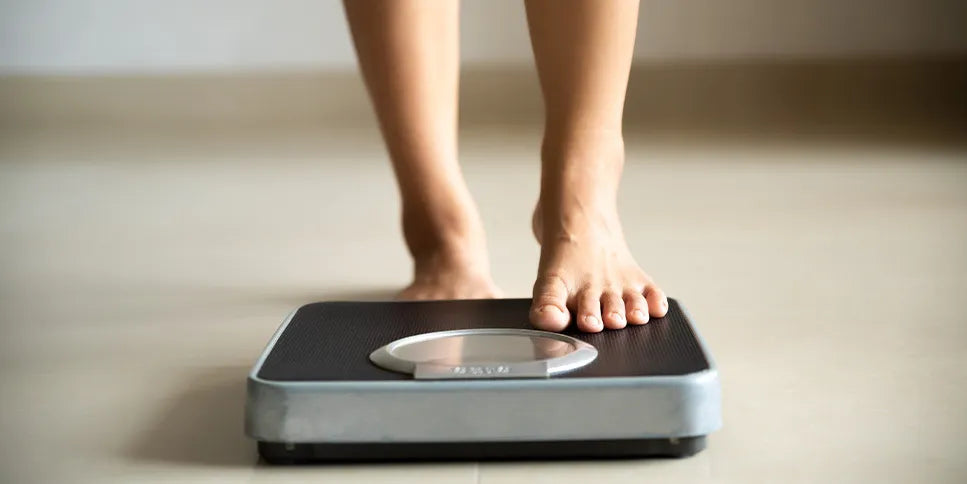The beginning of a weight loss journey is often quite encouraging because the sudden changes to diet and exercise often have some pretty immediate effects—and the more weight you have to lose, the more you’ll see fall off right at the start.
Once you’ve been on the path to weight loss for a little while, progress may slow a little and if you’re not quick to make a few key adjustments, you could hit a weight-loss plateau.
Luckily, there are some very effective strategies for avoiding the dreaded weight-loss plateau. Once you see your progress start to stall, try these 5 tactics to push past a plateau.
Explore America's #1 Selling Weight Loss Supplements
1. Take a break from booze
A small omission with a big weight-loss payoff, taking a break from alcohol while you work through a weight-loss plateau—or simply cutting back—is one of the best ways to move the needle on weight loss.
Studies have shown that drinking alcohol actually inhibits weight loss and if that weren’t enough, drinking is also associated with belly fat accumulation.
In a study done on 283 participants trying to lose weight, reducing or removing alcohol led to more weight loss and fewer incidences of overeating by the end of the study period. The reason many people tend to overeat when drinking is because inhibitions are lower under the influence of alcohol.
Shop & Save on Weight Loss Gummies | #1 Selling in USA
2. Eat less carbs
If you’re not on a carb-restricted diet, it’s one worth considering. There are decades of research on low-carb diets for weight loss and one meta-analysis of 13 prominent studies showed that dieters who consumed less than 50 grams of carbs each day saw a significant reduction in overall body fat.
One way to reduce carbs naturally is by simply removing all refined carbs, bread products, pasta and rice and replacing starchy vegetables like sweet potatoes, peas and squash with leafy greens and cruciferous veggies. But if you really want to get the job done right, enlist the help of a carb-tracking app so you get it down to a science right away.
3. Keep a food journal
Most of us think we eat less than we actually do. So much so that when study authors decided to test the theory, they found that when people don’t log what they eat and instead estimate, they are usually underestimating how much they eat by a whopping 50%. Read that again.
Weight loss is hard enough as it is without wasting precious time guessing and never seeing the scale budge. Get it right the first time by tracking every meal and snack as you go along so you can course correct right away if you exceed your macronutrient limit for the day.
Shop & Save on Weight Loss Powder | #1 Selling in USA
4. Add weight training to your exercise program
It was previously thought that cardio exercise was the holy grail of fitness for fat loss because it burns so many calories per session but emerging research is now revealing that strength training and cardio are actually pretty neck and neck when it comes to calories burned per session.
In addition to these findings, what gives weight training a leg up in the competition is what happens after the workout is over. Unlike cardio where all your calorie-torching magic stops when the workout ends, with strength training you continue to burn calories for an impressive 72 hours after. That means that for nearly three days afterward, your metabolic rate remains high and zapping calories—even when you’re resting.
For the best results and to help you move past a weight-loss plateau, experts recommend a combination of cardio and strength training—but whatever you do, don’t skip out on strength training.
Shop & Save on Weight Loss Pills | #1 Selling in USA
5. Try time-restricted eating
Intermittent fasting (sometimes called IF) is when you split your 24-hour day into fasting and feeding windows. The 16:8 method is arguably one of the most popular IF splits, which just means you’d eat for eight hours a day and fast for 16—so if you eat your first meal at 10am, you’d eat your last meal of the day by 6pm.
If you’re new to fasting, start out with 12:12 fast—eat meals as you normally would for 12 hours and then fast for the other 12 hours. As you acclimate and if you feel good eating this way, work up to 16:8 and then maybe even 18:6. Always consult with your doctor before starting an intense fasting protocol and listen to your body. Some days you’ll have the stamina to fast longer and you’ll feel great while other days, you’ll have to cut it short and extend your feeding window and that is perfectly fine.
Blogs You'll Love:
- How to Lose Weight the Fastest?
Our Most Read Content:
- Frequently Asked Hydroxycut Q&A
- Is Hydroxycut Effective?
- Is Hydroxycut Safe?
- Does Hydroxycut Work?
- Wondering About Hydroxycut Side Effects?
Shop America's Best Selling Weight Loss Supplements
*The links used in this article are being provided as a convenience and for informational purposes only; they do not constitute an endorsement or an approval by Iovate Health Sciences International Inc. or any of its affiliates (“Iovate”) of any of the products, services or opinions of the corporation or organization or individual. Iovate bears no responsibility for the accuracy, legality or content of the external site or for that of subsequent links. Contact the external site for answers to questions regarding its content.


